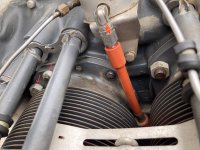SwimmingDragonfly96
Well Known Member
For those of you who have checked this, is it harder to hand prop your hot engine vs hand propping your cold engine? I’ve gone down a crankcase fretting rabbit hole. My engine has 350 TTSN from the Lycoming factory. Runs great, doesn’t burn any oil, analysis at every oil change is clean, filter always spotless, but I do notice a little more resistance after flying. Fretting kind of scares me as there’s no definitive way to check for it unless I’m mistaken?
Thanks!
Thanks!





